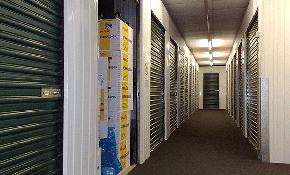PHOENIX-Local real estate experts say the industrial market is faring OK despite record negative absorption of 1.9 million sf in the first half of the year. And, the times could get tougher if construction isn’t held in check.
At the second quarter end, the overall vacancy of industrial buildings increased to 8.1%, up 0.5% from Q1′s 7.6%. Although the vacancy rate went up, it’s a positive indication of the resiliency of the Valley’s industrial market, Rob Stephens, director in the Industrial Properties Division of Cushman & Wakefield of Arizona Inc., tells GlobeSt.com. “This is a healthy vacancy figure when you consider we’ve lost 1.9 million sf of absorption year-to-date,” he says. “Our market remains strong when compared to other US cities, but continued negative absorption combined with on-going construction could lead us to significantly higher vacancies in the near future.”
The 1.9 million sf of negative net absorption figure is somewhat misleading. “Revlon’s move from the Southwest Phoenix submarket comprised 880,000 sf of our overall negative net absorption,” he says. “When you combine that figure with Motorola’s downsizing in North Tempe, the negative impact is significant. That type of large tenant movement is not anticipated to continue during the remainder of 2001.”
Vacancy levels vary greatly throughout the Valley, geographically and by product type, according to the Cushman & Wakefield survey. The lowest overall vacancies are found in the Sky Harbor Airport and Mesa areas, which posted 3.4% and 3.7%, respectively. South Mountain and Southwest Phoenix lead the region’s submarkets, with 12.5% and 12.3%, respectively.
By product type, the office-service center sector has the most available space. It’s showing an 11.2% vacancy whereas manufacturing is the healthiest at 5%. High-tech took the biggest hit as researchers found about half of the space is vacant. North Tempe is running contrary to that finding, showing high-tech space to be 99% filled.
Warehouse and distribution space in southwest Phoenix has experienced one of the largest jumps in vacancy due to significant construction activity. At the end of the first quarter, that product’s vacancy rate was 11.2% vacancy while today it is standing at 14.9%.
Even with negative net absorption and new construction, rental rates remain steady. The weighted average net rental rates rose from 51 cents per sf per month at the end of first quarter to 52 cents per sf today, Stephens says. “While quoted rates appear to be holding still, we are seeing some lease concessions offered and tenant benefits entering the arena,” he says.
The strongest leasing this year has taken place in the far southwest Phoenix submarket where nearly 570,000 sf of positive net absorption occurred. Tosco, which owns and operate Circle K convenience stores, leased 212,000 sf in the submarket, largely contributing to the total space leased.
During the first half of 2001, more than 1.4 million sf of new industrial space has been added to the inventory. While spread throughout the Valley, large portions of that new space can be found in the warehouse and distribution sector in the far southwest submarket and office-service sector in the South Mountain submarket. Both submarkets contain many new projects with high vacancies.
Some 4.26 million sf of new construction is rising in the metro area, about one fourth of which is situated in southwest Phoenix. Other areas with significant industrial construction include South Mountain, north Tempe and the far southwest, which is going to add nearly 900,000 sf to its inventory this year. The far, the southwest submarket already is boasting a 10.7% vacancy. “The construction deliveries could prove problematic to that area,” says Stephens. “However, the submarket is recognized as a hub for very large warehouse users. It is not unfeasible for a tenant to enter the area requiring upwards of 500,000 sf. The large inventory of vacant space could be diminished rapidly with the needs of a few users.”
Phoenix, like most markets throughout the nation, has experienced a real estate downturn reflective of the overall sluggish economy. “Our economic indicators show optimism for the remainder of 2001,” says Stephens. “It is a good sign that investors still favor industrial space in the Valley and we’re viewed as much healthier than other cities nationwide.





 Copyright © 2024 ALM Global, LLC. All Rights Reserved.
Copyright © 2024 ALM Global, LLC. All Rights Reserved.











